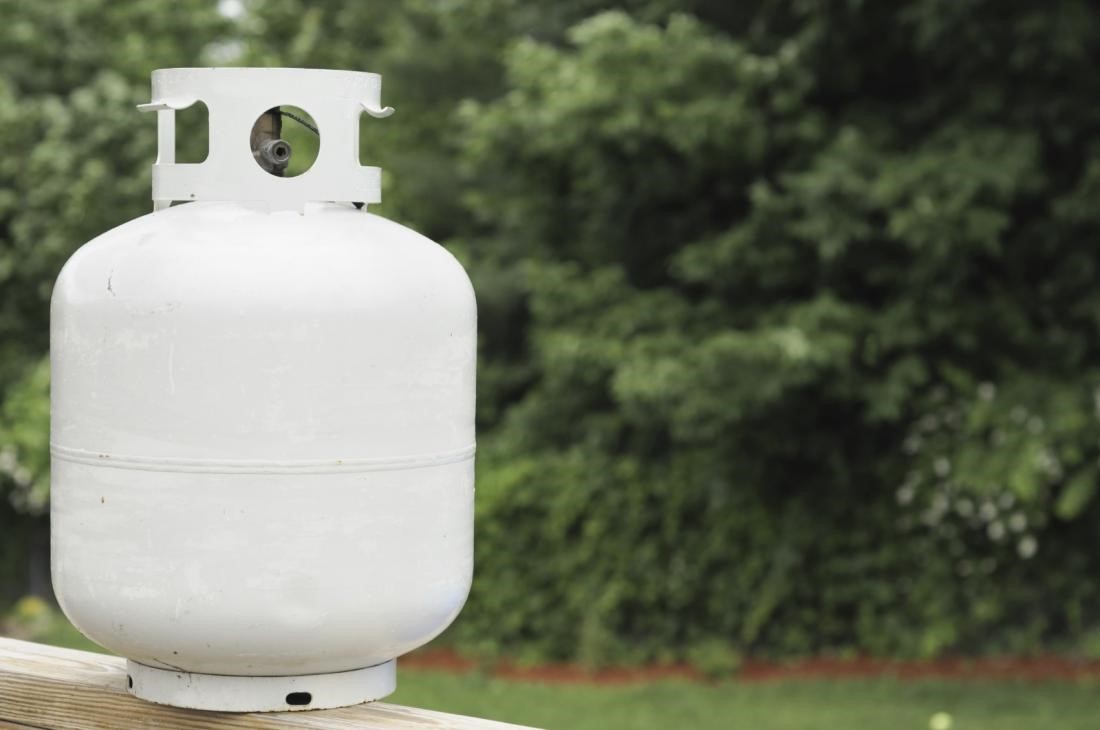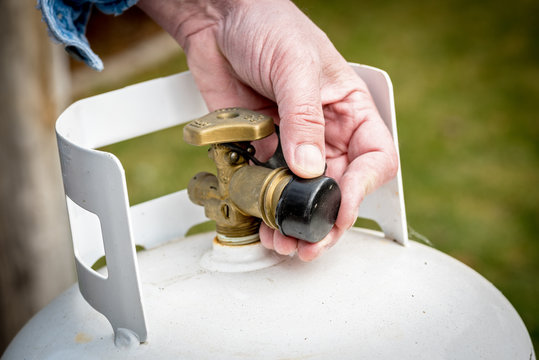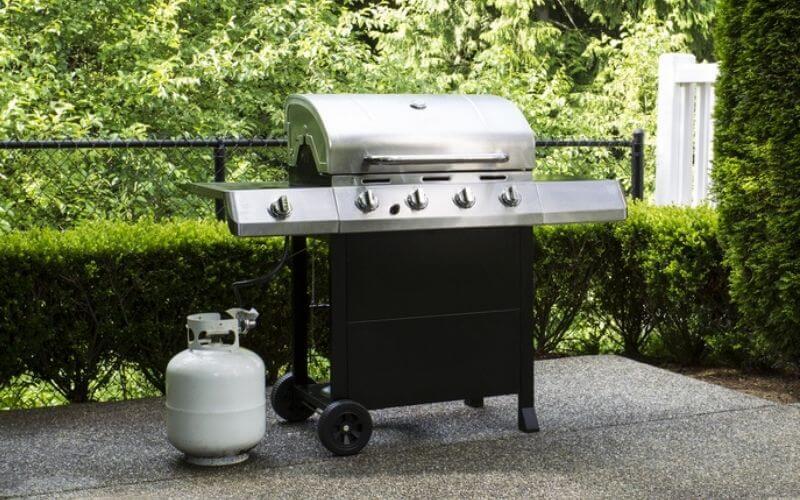How To unstick a propane tank valve? apply a propane-safe lubricant to the valve stem, gently tap the valve with a hammer, and use a wrench to turn the valve counterclockwise. If the valve is still stuck, use a penetrating oil or seek professional help.

Reasons why a propane tank valve may become stuck:
There are several reasons why a propane tank valve may become stuck. Some of the most common causes include:
- Corrosion: Over time, the metal components of the propane tank valve may begin to corrode. Corrosion can cause the valve to become stuck or difficult to turn.
- Debris: Dirt, dust, and other debris can accumulate on the valve stem, making it difficult to turn.
- Over-tightening: If the valve has been over-tightened, it may become difficult to turn.
- Rust: Rust can develop on the valve stem, causing it to become stuck.
- Lack of use: If the propane tank valve hasn’t been used in a long time, it may become stuck due to lack of lubrication.
How to unstick a propane tank valve?
To unstick a propane tank valve, follow these steps:
- Turn off the propane tank valve by turning it clockwise until it stops.
- Apply a propane-safe lubricant to the valve stem. Be sure to use a lubricant that is specifically designed for use with propane.
- Wait for a few minutes to allow the lubricant to penetrate the valve stem.
- Gently tap the valve stem with a hammer or other tool. This can help to loosen up any debris or corrosion that may be causing the valve to stick.
- Use a wrench to turn the valve stem counterclockwise. Be careful not to over-tighten the valve or use too much force, as this can cause damage.
- If the valve is still stuck, try using a penetrating oil. Follow the manufacturer’s instructions carefully, and avoid getting the oil on any other parts of the tank.
- Once the valve is loosened, turn it counterclockwise until it is fully open.
- Test the propane system to ensure that the propane is flowing correctly.
Remember to always exercise caution when working with propane tanks, and if you’re unsure about how to handle a particular situation, don’t hesitate to seek professional help.
Preventing a Propane Tank Valve from Getting Stuck
Preventing a propane tank valve from getting stuck is key to ensuring the safety and reliability of your propane system. One way to prevent the valve from getting stuck is to perform regular maintenance, including cleaning the valve stem and threads with a wire brush and applying a propane-safe lubricant to the valve. It’s also important to avoid exposing the tank to extreme temperatures or harsh weather conditions, which can cause rust or corrosion on the valve. Finally, always make sure to use the correct type of valve and handle the tank and its components with care to avoid any potential damage or safety hazards.

Why is my propane tank valve not releasing gas?
If your propane tank valve is not releasing gas, it could be due to a variety of reasons such as a faulty regulator, an empty tank, or a clogged valve. Check to make sure that the tank is not empty and the regulator is functioning properly. If those are not the issues, the valve may be clogged with debris or dirt. In this case, it’s best to seek professional help to avoid any potential safety hazards.
How do I reset a propane tank valve?
To reset a propane tank valve, turn off the valve by turning it clockwise until it stops. Then, disconnect the propane tank from any attached equipment. Wait for a few minutes, and then reconnect the propane tank. Turn the valve counterclockwise until it’s fully open. Test the propane system to ensure that the propane is flowing correctly.
How Does a Propane Tank Work?
Propane tanks work by storing propane gas under pressure. The tank is typically made of steel or aluminum and has a valve at the top for filling and releasing gas. The pressure inside the tank is controlled by a regulator, which reduces the pressure to a safe level for use in propane-powered equipment.
The Different Types of Valves Used in Propane Tanks
There are two types of valves commonly used in propane tanks – the ACME valve and the POL valve. The ACME valve has a threaded collar that screws onto the tank’s valve, while the POL valve has a threaded stem that screws into the tank’s valve. Both types of valves are designed to be safe, reliable, and easy to use.
Why Your Propane Tank Valve Might Be Stuck?
There are several reasons why your propane tank valve might be stuck, such as rust or corrosion, dirt or debris buildup, or damage to the valve stem or threads. Using the wrong type of lubricant or oil on the valve can also cause it to stick. It’s important to avoid forcing the valve open or closed, as this can cause damage or create a safety hazard.
Unsticking a Propane Tank Valve Safely
To safely unstick a propane tank valve, turn off the valve and apply a propane-safe lubricant to the valve stem. Wait for a few minutes, then gently tap the valve stem with a hammer to loosen any debris or corrosion. Use a wrench to turn the valve counterclockwise, but avoid using too much force. If the valve is still stuck, seek professional help to avoid any potential safety hazards.

How do you open a propane valve?
To open a propane valve, turn the valve counterclockwise until it’s fully open. It’s important to use a wrench or other tool to avoid over-tightening the valve, as this can cause damage. Always exercise caution when handling propane tanks and their components, and if you’re unsure about how to open the valve safely, seek professional help.
Can I use WD-40 on a propane tank?
No, it’s not recommended to use WD-40 on a propane tank as it’s not designed for use with propane and can create a safety hazard. Instead, use a propane-safe lubricant to help unstick a valve or other components of the propane tank. Always follow the manufacturer’s instructions carefully and exercise caution when handling propane tanks and their components.
FAQs
Conclusion
A stuck propane tank valve can be a frustrating problem, but it’s not necessarily a cause for panic. By following the tips outlined in this blog post, you should be able to loosen up a stuck valve and get your propane-powered system up and running again. Remember to always exercise caution when working with
Are you really enjoying different types of dishes and love to make tours several times? Grilling something is the core of enjoyment if you make fun with friends & family.
However Hungry Grills is most trustable yet in shares knowledge about Grills and its related chop chop job & making loyal reviewed to readers.
-Mitchel Shawn